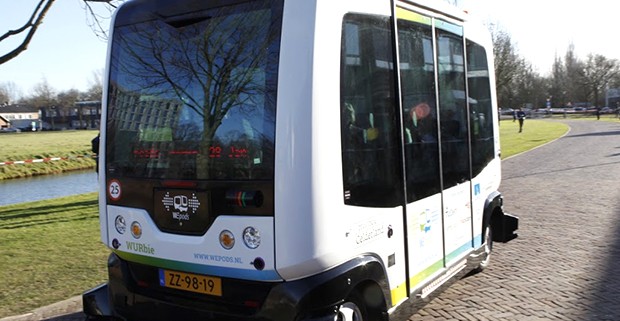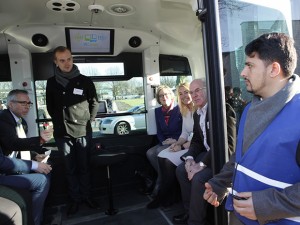‘WEpod’ Autonomous Shuttle Takes 6 Passengers For Successful Ride on Dutch Public Roads
Jennifer van der Kleut
An autonomous shuttle took the first-ever drive on public roads in the Netherlands, taking six passengers along for the ride.
Bloomberg Business reports that autonomous “WEpod” shuttles are now serving the college town of Wageningen, Netherlands.
WEpod’s first test on a public road took place last week, marking the first such test in Europe, IEEE Spectrum reports.
The shuttles, inspired by the work of French company EasyMile, which designed the successful EZ-10 shuttles, were developed by three Dutch companies-navigation provider Mapscape, Robot Care Systems and the Technical University of Delft.
In the beginning, Bloomberg says the six-passenger shuttles will travel very slowly-around 25 km per hour-and will not be operated at night or during inclement weather. But if testing goes well, the autonomous shuttles could replace human-driven buses on less popular, less profitable routes.
IEEE Spectrum explains that the WEpod vehicles have onboard computers to control all the braking and steering commands, and also come equipped with cameras, radar sensors, and laser sensors to detect their surroundings. Interestingly, though, a human operator monitors the autonomous vehicle’s progress remotely from a control room and can also intervene remotely if necessary.
Interestingly, WEpods are specifically designed to travel amongst other vehicles, including human-driven ones, instead of requiring their own dedicated lanes.
Many in the industry hope that these successful runs will help give a necessary push to the European Union (EU) to get moving with self-driving vehicle guidelines and regulations.
With the Netherlands currently holding the EU presidency, Dutch Minister of Infrastructure Melanie Schultz van Haegensaid said she will try to get counterparts in April to reach an agreement “on what we’ll adjust, research and need to do in the coming period,” Bloomberg reports.
Current concerns of European leaders include issues of liability, and how to classify different types of autonomous transportation, Bloomberg reports.
“The WEpod is outside all existing categories,” Schultz van Haegensaid told Bloomberg. “It’s not a car, it’s not a bus, it’s not a motorized vehicle as the speed is limited — it’s an object on wheels at most.”



